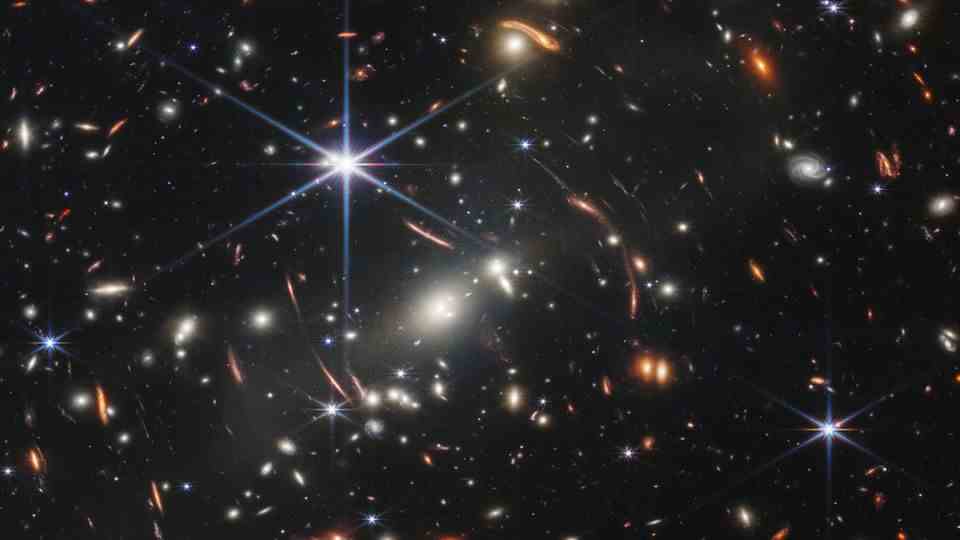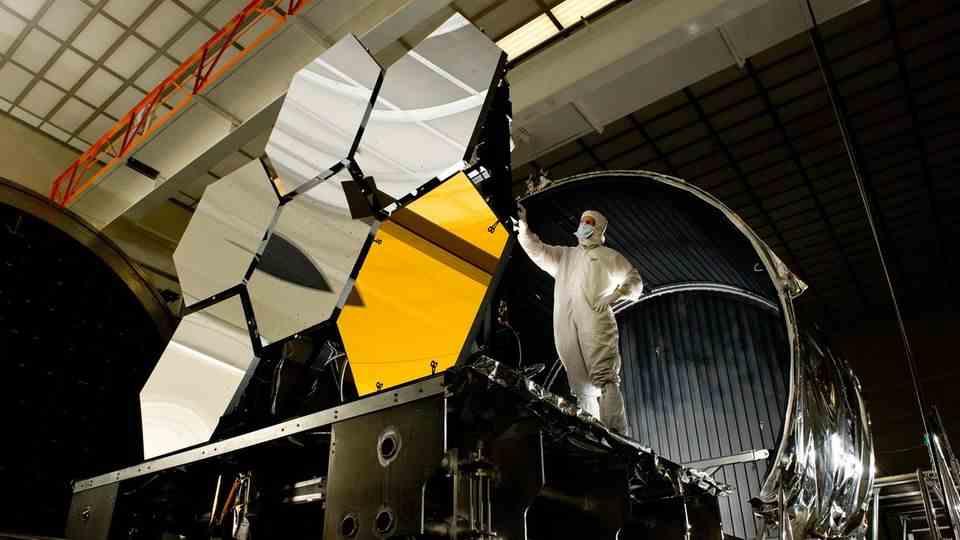astronomy
Spectacular footage from “James Webb” reveals Neptune’s rings
The planet Neptune hovers at the center of some rings. The rings were made visible using the James Webb project’s near-infrared camera
© Space Telescope Science Institute / ESA / Webb / DPA
The James Webb Space Telescope shows the planet Neptune with unusual accuracy. Its dust bands are clearly visible. But that’s not all.
The James Webb Space Telescope has captured a spectacular new image of the planet Neptune. The rings of the ice giant can be seen in the picture with exceptional clarity, as the European space agency Esa announced. The dust bands around the planet are also clearly visible.

A thin bright line around the equator could be a sign of the atmospheric circulation driving Neptune’s winds and storms. The North Pole is no longer visible to the telescope. However, the recordings indicated an unusual brightness in the region.
“James Webb”: most expensive star observation instrument ever built
“James Webb” was built jointly by the space agencies in Europe (ESA), the USA (Nasa) and Canada (CSA) and was launched on December 25th on board an Ariane launch vehicle from the European spaceport Kourou in French Guiana – after there had previously been cost explosions and repeated postponements. The first images from the telescope were published in mid-July and provided the deepest and most detailed insights into space to date.
The space telescope explores the early days of the cosmos, just a few hundred million years after the Big Bang around 13.8 billion years ago. Astronomers hope to draw conclusions about the formation of the first stars and galaxies. The telescope also searches space for exoplanets.
James Webb is the most expensive stargazing instrument ever built. It took more than 15 years to plan and 17 years to construct. Again and again there were delays and the price increased again and again.
More than one hundred research groups want to wrest great secrets from the universe with the telescope. They were selected from over a thousand applications for the first, one-year measurement phase. The telescope is to remain in operation for ten years, and every hour of measuring time is fought over.
Sources: Esa, DPA



